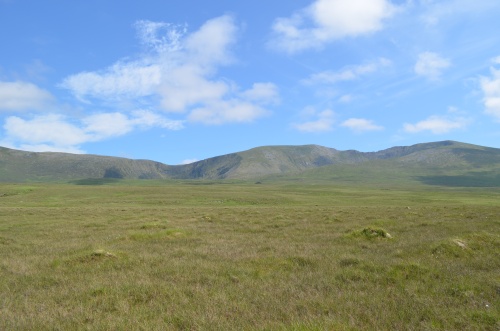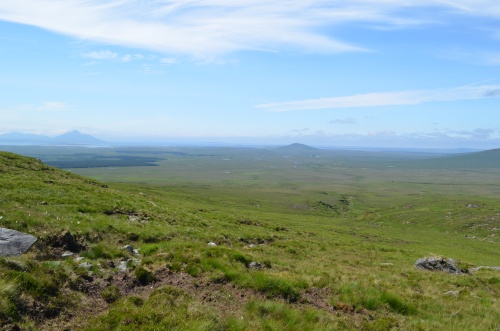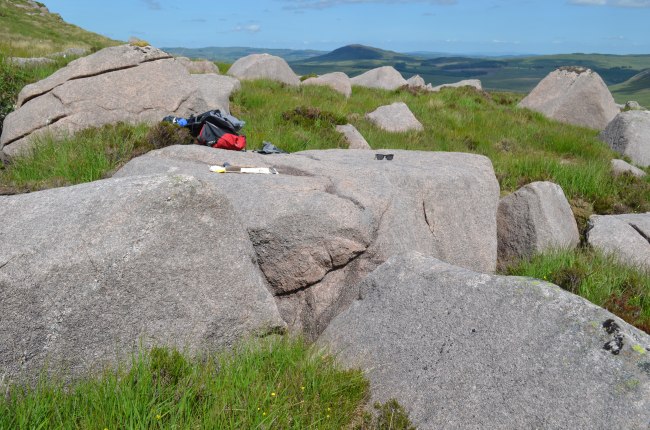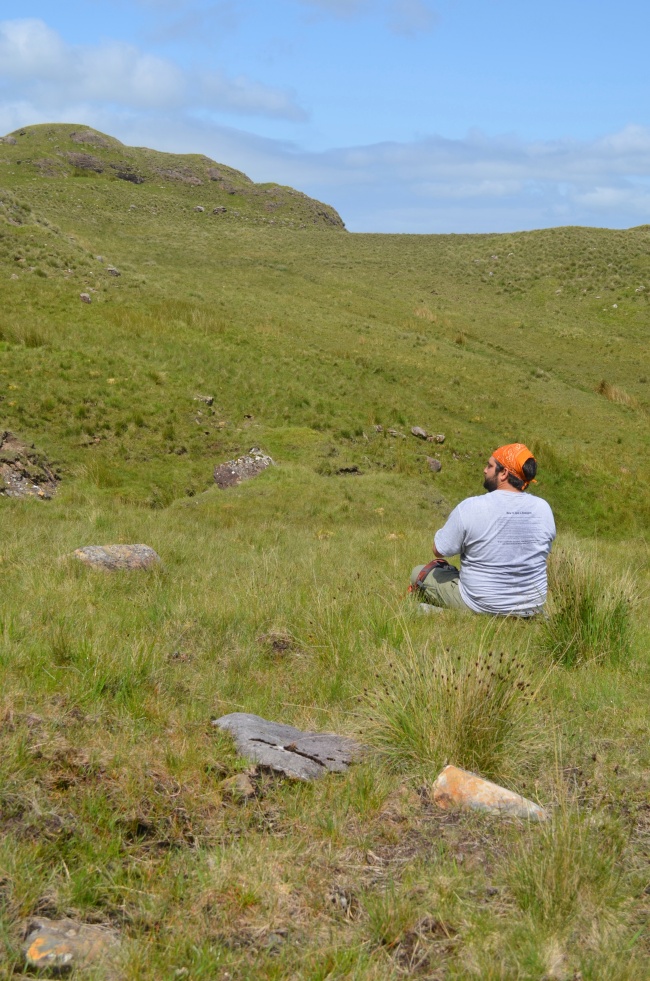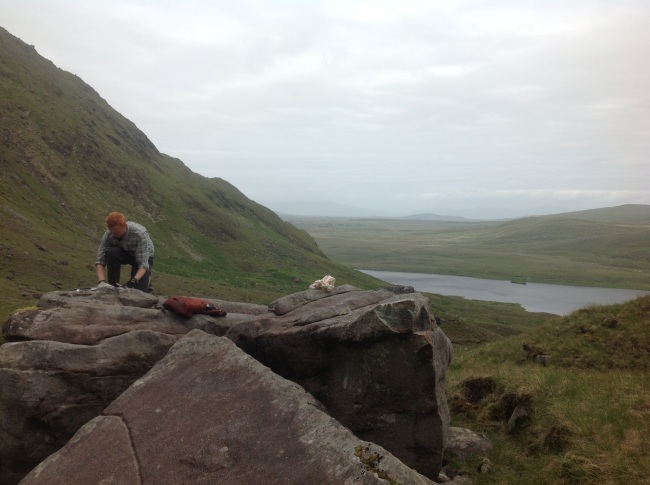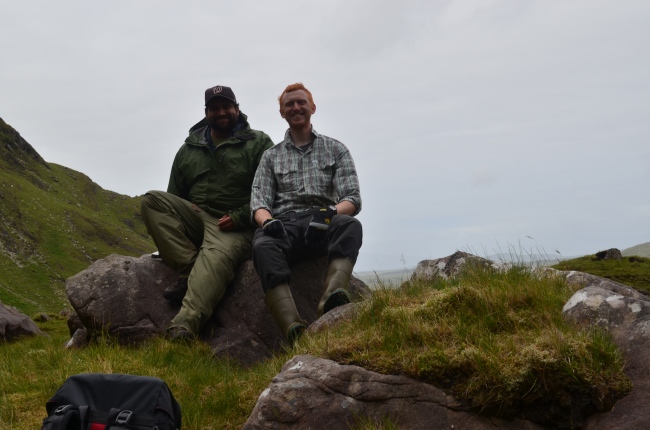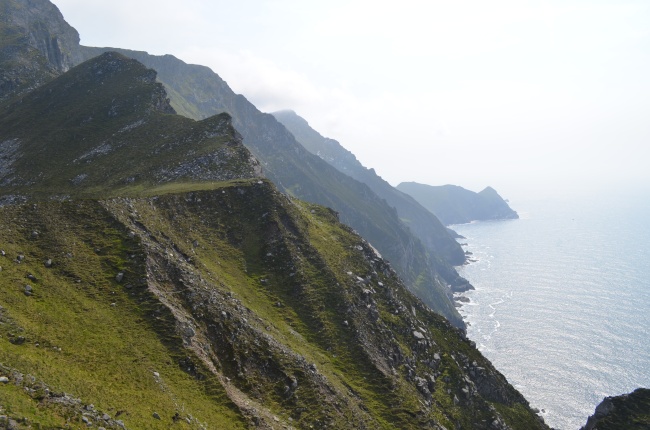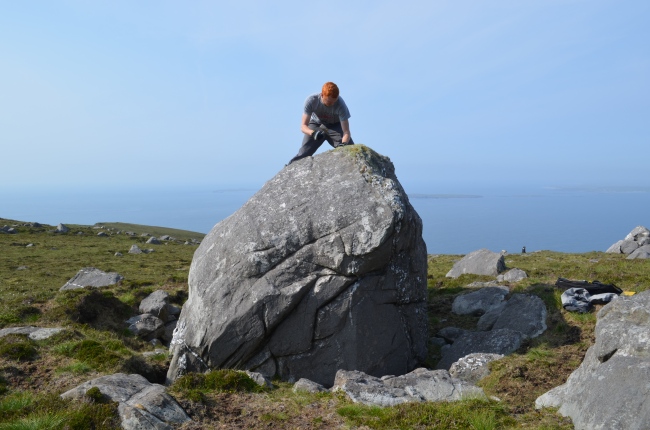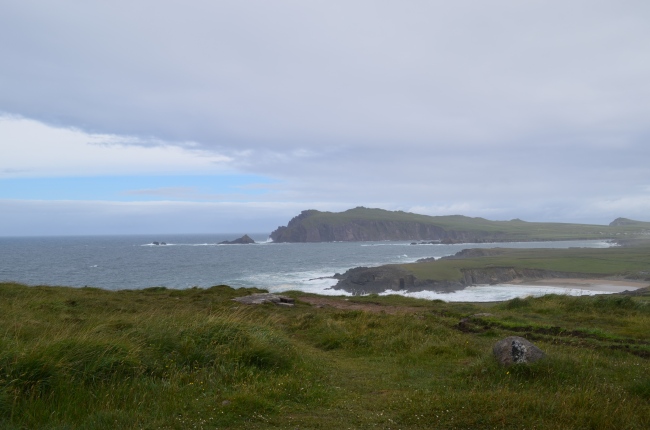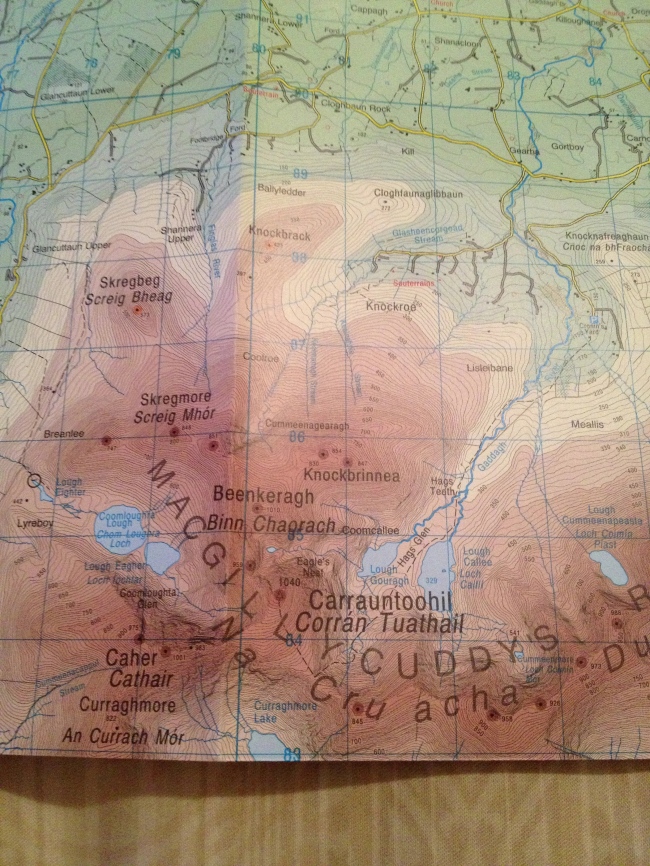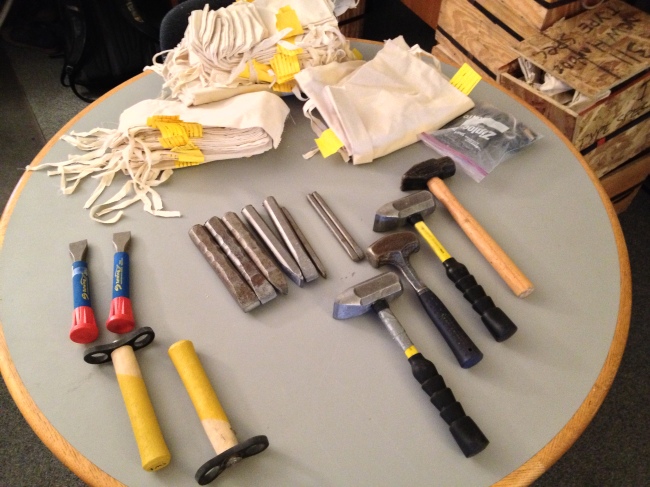Scary moment a few days ago. I was back sampling at the cirque on Achill Island when the cloud cover dropped and visibility diminished considerably. Once I decided to head out I started walking uphill towards what I thought was where I came in. Next thing I know I am standing near the edge of a 300 meter cliff down to the Atlantic. It probably wasn’t as close as I remember it, but it sure woke me up.
Once I got moderately oriented I took the only visible route back out of the cirque, which just happened to be up the very steep sidewall. Definitely wore me out, but I figured it was the safest route. I had been told to be mindful of quickly dropping cloud cover in Ireland, and now I see why.
Since I had finished up sampling at the Achill Island site early I used the extra day to run back out to the Nephin Beg range and see if I could grab a few samples from a cirque we visited a few weeks before. While there have been steeper more technically difficult hikes this season, this one hike was easily the hardest one. It’s a three kilometer hike across a bog with hidden creeks that love to catch your feet in crevasses. The bog is followed by a sneaky climb that looks gentler than actuality. It didn’t help that the midges were out in force as well as their larger horse fly friends. They were distracting enough at the car that I neglected to put on sunblock. Something I am paying for now.
Yet, even with all of the troubles I have encountered I am still in good spirits. That means two more sample sites completed and only two more to go. I am returning to Connemara today, and will finish there tomorrow, and then back down to Kerry to visit Dingle Peninsula. Today though, I am taking it easy. Getting some coffee in Westport and giving my clothes a much needed washing.
Here is a picture of the cirque I visited yesterday, and one from the perspective of the cirque.
